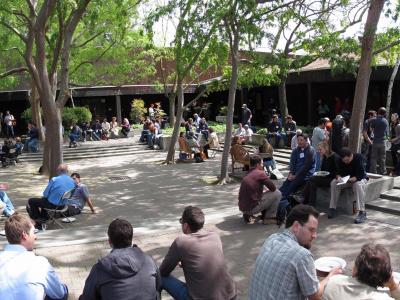Evaluating Instream Habitat Variables and Watershed Conditions to Inform and Prioritize Salmonid Recovery Actions
Workshop Coordinators:
Tom Leroy, Pacific Watershed Associates
Danny Hagans, Pacific Watershed Associates
This workshop will provide restorationists and land managers with information on tools and techniques to evaluate and improve watershed conditions for salmonids and other native fishes at a watershed scale. The three focus topics of the workshop will be: (1) Big picture planning and recovery strategies where we will explore regional and community planning and targeting of relevant ecological needs, (2) Monitoring instream factors and salmon distribution to quantitatively evaluate status, trend, and recovery direction to inform restoration, and (3) Specific methods for identifying, characterizing, and prioritizing restoration actions within a watershed to provide the most cost-effective implementation strategy for sub-watersheds. Specific workshop presentations will include: a re-evaluation of salmonid population and effectiveness of recovery actions to date, results from a variety of monitoring and assessment efforts and stream characterization techniques including the Environmental Protection Agencies Environmental Monitoring and Assessment Program (EMAP-West) and the California Surface Water Ambient Monitoring Program (SWAMP), and discuss a variety of methodologies for identifying, characterizing, and prioritizing specific restoration needs and opportunities within a watershed that include large woody debris loading, fish barrier removal, identifying off-channel habitat opportunities, and sediment reduction, all aimed toward restoring physical and biological form and function. Finally, we will finish the day with a panel discussion where everyone is invited to engage in more in-depth discussions of the day’s talks and consider the most relevant ideas in relation to their watershed. Attendees will take home from this workshop a baseline understanding of several scientifically sound techniques for evaluating watershed conditions, their limitations, and how to strategically employ them in their local watersheds to inform and prioritize salmon recovery.
Part 1- Planning Salmon Habitat Improvement Projects
State of the Salmonids – Fish in Hot Water
Patrick Samuel, California Trout
Is Habitat Restoration Targeting Relevant Ecological Needs for Endangered Species?: Using Pacific Salmon as a Case Study
Katie Barnas, NOAA Fisheries
Managing Landscape Cumulative Effects Using Innovative Planning Technology and Process
Barry Wilson, CE Analytic Ltd.
Part 2- Evaluating and measuring stream and fisheries conditions
Building on CMP Monitoring Efforts to Document Insufficient Stream Flow as a Bottleneck to Salmonid Survival in Tributaries of the Russian River, CA
Sarah Nossaman, University of California Sea Grant
Assessing Salmonid Habitat Conditions and Management Actions in the Garcia Watershed Using the U.S. Environmental Protection Agency’s Environmental Monitoring and Assessment Program (EMAP-West) and the California Surface Water Ambient Monitoring Program (SWAMP)
Jonathan Warmerdam, North Coast Regional Water Quality Control Board, and Jennifer Carah, The Nature Conservancy
What does Habitat Monitoring Data Mean to Salmonids? Creating Status, Trend, and Recovery Information from Field Data
Sean P. Gallagher, California Department of Fish and Wildlife
Developing and Deploying a Network of Water Quantity/Quality Sensors to Monitor and Protect Streams for Salmonids
Brad Job, Pacific Watershed Associates
Factors Influencing Chinook Egg Survival in the Regulated Cle Elum (WA) River
Mark D. Bowen, Environmental Science Associates
Part 3- Evaluating and prioritizing for treatment, watershed scale impacts on salmonid habitat
Evaluating Sediment Effects and Utilizing Sediment Budget Elements to Prioritize Watershed Scale Salmonid Habitat Recovery to Reduce Cumulative Impacts
Danny Hagans, Pacific Watershed Associates
Evaluating Stream Channel Corridors for Habitat Improvement Projects
Thomas H. Leroy, Pacific Watershed Associates
Valley Bottom Geomorphology, Inundation, and Connectivity: Identifying and Prioritizing Floodplain and Off-Channel Habitat Restoration Opportunities
Jay Stallman, Stillwater Sciences

